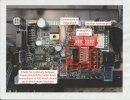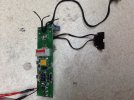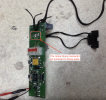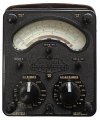The mechanic
Registered
Hello everyone, I know someone here can answer this one....
I am attempting to reconnect the 4-wire motor block connector to a replacement circuit board(photos below). The issue that I am having is that all four wires are black, the connector does not have any wiring colour codes (but strangely the motor block does!) and the circuit board just says "motor" (and stubbornly laughs at me!). As I do not want the "magic smoke" to appear, I thought it prudent to ask!
Coming from an auto-electrical background, I find it frustrating that there is no real colour coding or notation on the board to make replacement of components a little easier
Thanks in advance
Dave
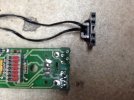
I am attempting to reconnect the 4-wire motor block connector to a replacement circuit board(photos below). The issue that I am having is that all four wires are black, the connector does not have any wiring colour codes (but strangely the motor block does!) and the circuit board just says "motor" (and stubbornly laughs at me!). As I do not want the "magic smoke" to appear, I thought it prudent to ask!
Coming from an auto-electrical background, I find it frustrating that there is no real colour coding or notation on the board to make replacement of components a little easier
Thanks in advance
Dave





